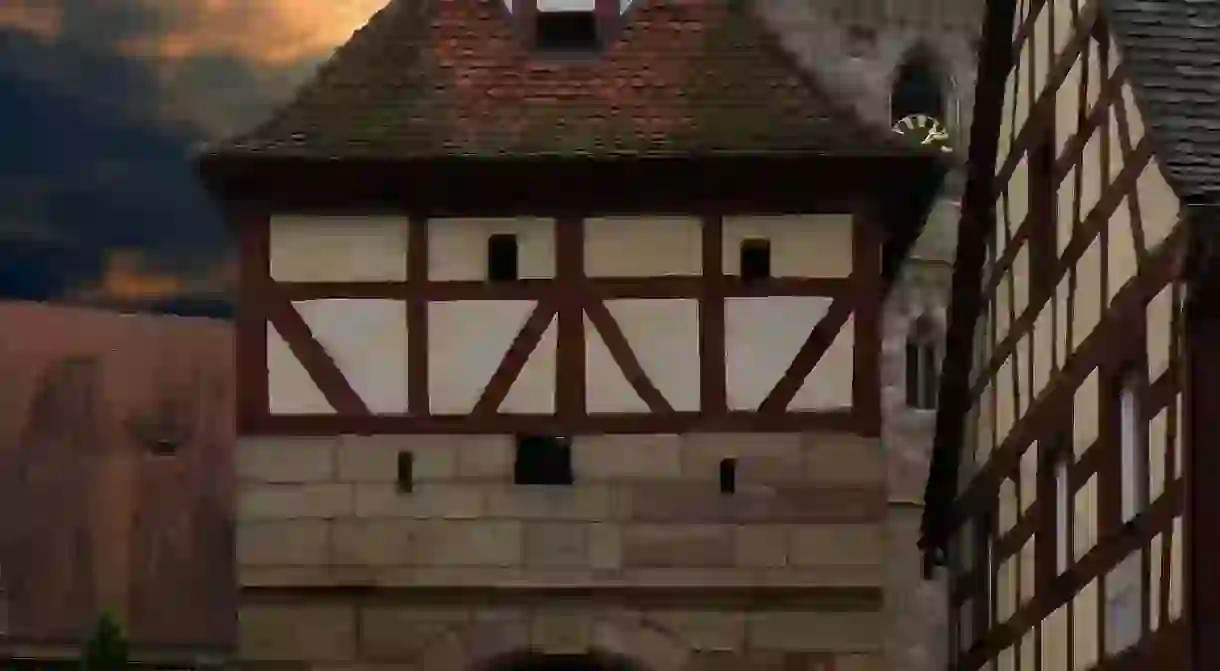How the German Monuments' Men Saved Nuremberg's Precious Art

Nuremberg, a north Bavarian city roughly halfway between Frankfurt and Munich, was nearly 90% destroyed during World War Two. Most of its the city’s art, including cathedral windows, survived unscathed thanks largely to a network of existing tunnels under the city and some people who weren’t as confident as Hitler that Germany would easily win the war.
Beer tunnel history
More than 700 years ago, Nuremberg brewers dug a six-acre network of tunnel and cellars to store the cold-temperature-loving lagers that were popular in the area. Even the hard sandstone on which the mighty castle stood didn’t escape the tunnellers. The spread of refrigeration in the late 19th century meant brewers didn’t have much need for the tunnels. They could easily have been filled in, but thankfully, the pickling industry needed some space, so they took them over.

In the 1940s, when it became clear that Hitler’s world takeover plan was not going to turn out as well as he had expected, art-loving Germans arranged for the cellars to be fitted with diesel-powered air-conditioners and bomb-proof doors so stained glass windows and all the city’s important art, sculpture and crown jewels could be safely stored. All told, there were four bunkers created.
What they stored
When we talk about art and Nazis, most of the discussion centres around recovering the pieces Herman Göring had stolen from wealthy Jewish families. In the case of the Nuremberg cellars, most of what was stored in the bunkers came from the churches in town. Stained glass windows, furniture, carvings, sculptures – pretty much anything thought to have any artistic value.

Important pieces by German sculptor Viet Stoss that were nicked from Poland, hidden away and then eventually returned, one of the first globes ever made, some works by one of the only famous German painters, the local boy Albrecht Dürer, and several scientific tools, clock mechanisms and historical musical instruments.
In addition to all that, there were the six pieces of the Imperial Regalia – the Imperial Cross, the Holy Lance, the crown, the sceptre, the orb and the sword – that formed the essential kit of Medieval rulers in the south of Germany.

What’s happening in the tunnels now?
There’s a lot happening in the tunnels these days, though not much to do with beer or pickles or safeguarding art. Several groups give tours of the bunkers with talks that cover various topics. Friends of the Nuremberg Rock Cellars organises lectures and exhibitions as well a giving tours while Historisches Felsengänge offers tours in the dark, a ghost tour and a special tour for children. For a tour that focuses on the treasures that were once tucked away in the cellars, get in touch with the Nuremberg Museum.
Art has found its way back into the tunnels though this time it is not in hiding. The local group kunstbunker – forum für zeitgenössische Kunst e.V. puts on regular exhibitions of contemporary art.













